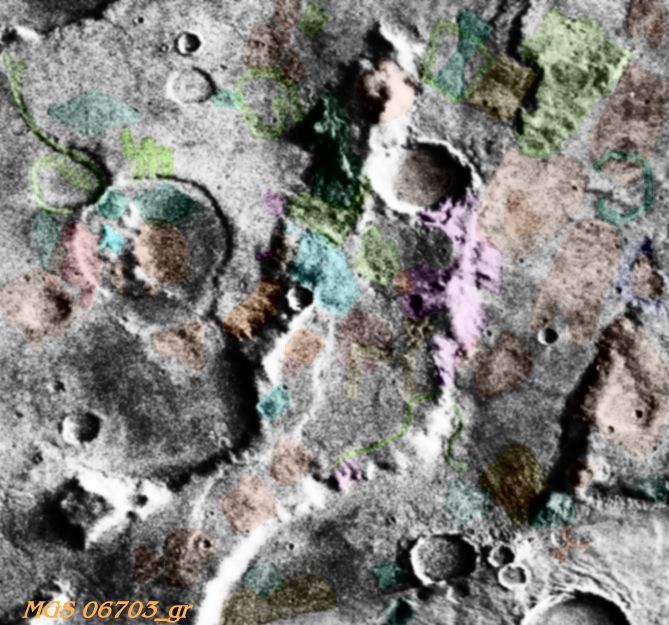

One interesting feature of the image is a departure from the Cydonia face forms toward something similar yet quite elongated, as we can see in several examples near the right border, about center, at either side of the partial hexagonal form that has been colored in green.
There are a great number of possible pyramids here, colored in blue-green, including two massive pyramidal forms near top center at the close end of a long raised row, that have curious alterations to the basic form.
Also very interesting is at least two very deliberate serpent forms, indicated in light green. The one at left which coils onto a circular mound or "crater", actually has a fish's tail. The one down and two the right from it is likely exempt from any natural origins unless the large raise cutting it in half actually collapsed onto it at some later time than when it was created, and even then it's still a formidable potential anomaly.
It is worth wondering if the Martian mapping of the "serpent paths" or "dragon lines" of the "earth-grid" employed symbolic markers just as literal as those sometimes used on the earth, such as the Serpent Mound, and the geography and geometry certainly merit further consideration in this regard.
The large crater at left may actually contain a massive aircraft of some sort (the "bird-shaped" object in light blue). The hourglass neatly superimposed on a pentagonal frame at upper left is blatantly anomalous, and is by no means an isolated instance of the hourglass symbol. In fact, it is actually one of the first anomalies mapped in images of Venus, and the symbolism and importance of this form has been explored in some detail both there and elsewhere.
The huge, almost pyramidal form at lower left (uncolored) may well be an anomaly in its own right-- it could well prove to be a damaged example of exactly what it tends to look like- an incredibly huge Mesoamerican pyramid.